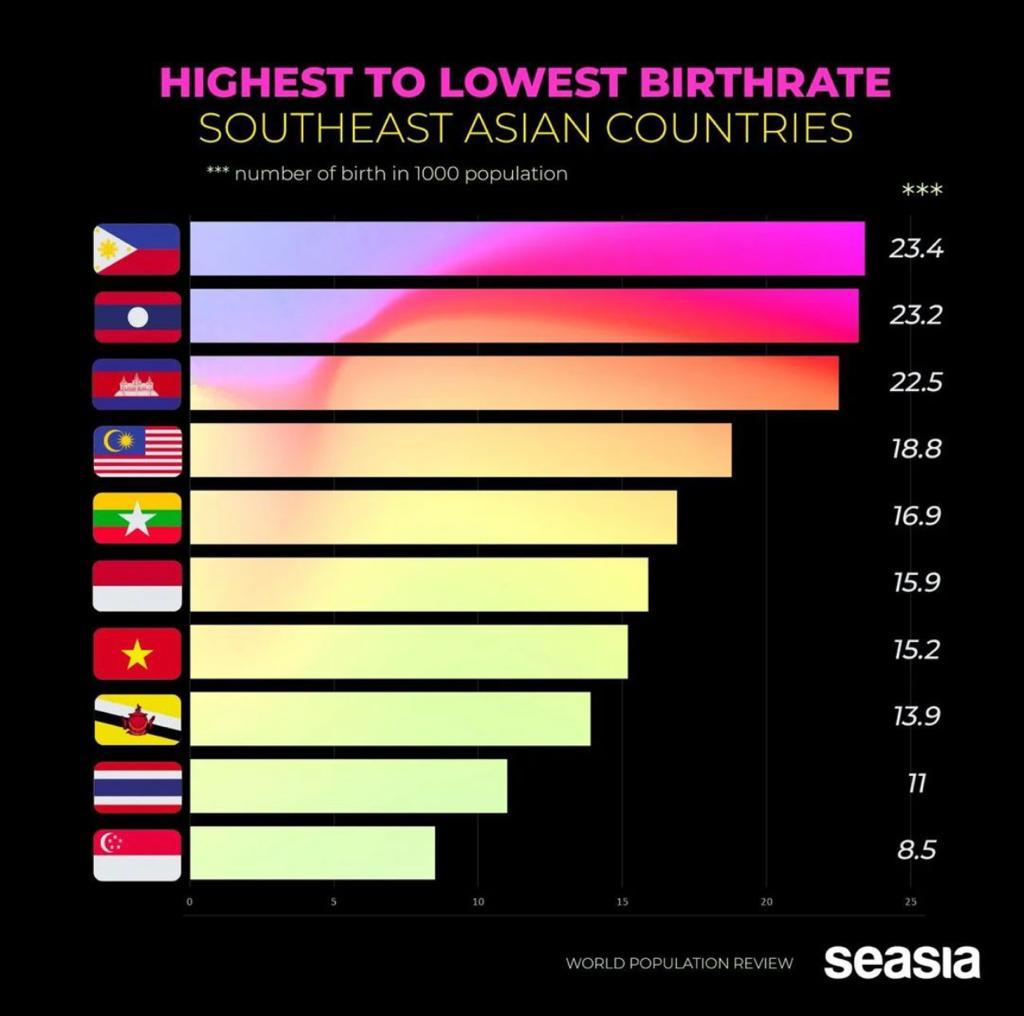The number of births per 1,000 people is known as the birth rate. The population of Southeast Asia is 681,485,685 people (data as of Thursday, June 16, 2022, based on the latest United Nations estimates). 8.58 percent of all human beings in the planet live in Southeast Asia.
Although not in terms of birthrate, Indonesia is one of Southeast Asia's and the world's most populous nations. Singapore has the lowest birth rate in Southeast Asia, whereas the Philippines is now in first place.

Indonesian government authorities are attempting to persuade individuals to have fewer children. The fourth-most populous nation in the world is working to reduce its fertility rate to 2.1 children per woman by 2025 by encouraging later marriages, family planning, and contraception.
That "replacement rate" would essentially slow down population growth in the 270 million-person nation, assuaging some worries that population increase would result in fewer job opportunities and a pressure on public services.
In the Philippines, a baby boom is being fueled by the pandemic
The country of 109.5 million Filipinos is expected to experience its greatest birth rate since 2012, according to the Commission on Population and Development of the Philippines.
Indeed, the University of the Philippines Population Institute and the United Nations Population Fund predict that when pandemics strike this nation in 2021, an additional 214,000 kids will be born.
Singapore's total fertility rate (TFR), often known as the birth rate, decreased to a record low in contrast to the Philippines. There were around 10% fewer marriages last year than in 2019 as a result of some Singaporeans delaying their nuptials because to the COVID-19 pandemic. Others have postponed their plans to have children.
In Singapore's situation, the government has battled the unrelenting decline in fertility since the 1980s. A set of pronatalist incentives was developed in 2001 and improved over time in response to the failure of a public campaign and small-scale programs to create outcomes.
Currently, the package comprises grants for businesses who implement flexible work arrangements, paid maternity leave, childcare subsidies, tax relief, refunds, and one-time monetary gifts.
Source: WorldPopulationReview.com, South China Morning Post, LATimes.com, BBC.com, ChannelNewsAsia.com, IMF.org


















